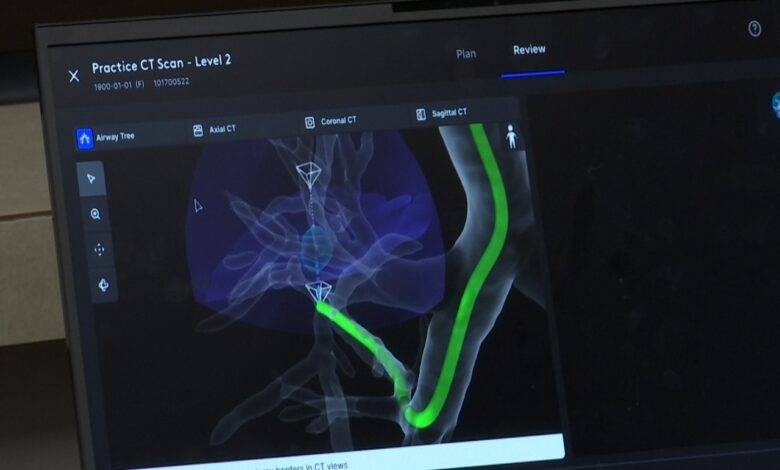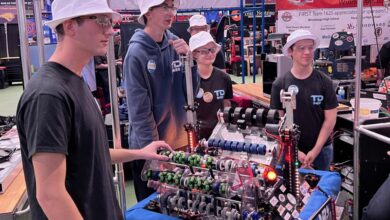Ion Robotic Technology now offered at Bismarck Sanford

BISMARCK, ND (KXNET) — Sanford Bismarck now offers Ion Technology — a robotic-assisted platform for minimally invasive peripheral lung biopsy — which will enhance the detection of lung cancer.
“One in 16 people will have lung cancer in their lifetime,” said ICU Sanford’s Medical Director Dr. Anthony Tello. “The mortality rate for lung cancer is the highest not only in the U.S. for lung-related mortality, but worldwide. Unfortunately, with lung cancer, once the diagnosis is made, 20% of those patients will die within six months. Why? Because by the time we diagnose it, it’s at a later stage”
Fortunately, Dr. Tello says that there is hope. The use of Ion technology as an early detection tool will provide oncologists the ability to navigate to distant regions of the lungs, so they may locate and test areas that could be cancerous.
“We put together this screening program called the pulmonary nodule clinic program,” Dr. Tello added. “We screen for cervical cancer with pap smears. We screen for breast cancer with mammograms. We screen for prostate cancer with PSA, a blood test. So if we have the highest mortality rate for lung-related mortality, for lung cancer, why aren’t we screening for lung cancer?”
Dr. Tello says that now, they can do just that. Patients that are between the ages of 50 and 80 who have a history of smoking a pack a day for over 20 years will qualify for a yearly CAT scan screening.
“We can pick up small nodules that may become cancer,” he continued, “or larger nodules that we need to diagnose. Is that a cancer or is it not a cancer? As part of that program, Ion Technology assists us in biopsying the nodules.”
Sanford Health Primary Care providers will be screening their patients at risk for lung cancer, and referring those found to have lung nodules to the Sanford Lung Nodule Clinic located inside the Bismarck Medical Center to be evaluated and tested.
Dr. Tello says that those who are experiencing issues or possible nodules should consult their primary care physician as soon as possible.
To date, six patients have used the Ion Robotic Technology for early detection.



